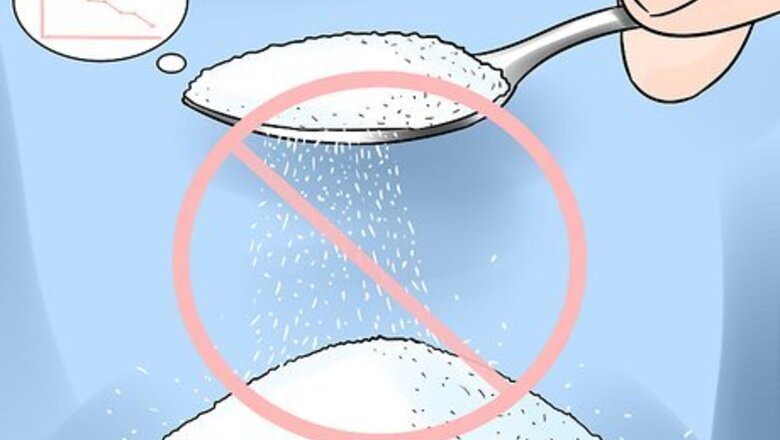
views
X
Trustworthy Source
PubMed Central
Journal archive from the U.S. National Institutes of Health
Go to source
Understanding the symptoms and preparing to deal with sugar withdrawal can help you permanently reduce your sugar intake.
Kicking the Addiction

Taper off your sugar intake over several weeks. One of the most common problems that many sugar addicts make is attempting to eliminate sugar from their diet all at once. This method often results in failure in just a few days. A body that is accustomed to receiving sugar on a daily basis cannot quickly adjust to the elimination of sugar, which has served as an energy source. Instead, try simple tricks like using one less teaspoon of sugar in your coffee, or eating half the amount of chocolate you usually do. You can also dilute sweet beverages. Try mixing half sweet tea with half unsweetened tea, or mixing half sugary soda with half unsweetened seltzer water. Try mixing something sweet with something healthy. For example, you could dip banana or apple slices in chocolate. Be aware that if you attempt to quit eating sugar all at once, you'll likely experience profound and severe withdrawal symptoms. The withdrawal symptoms may manifest themselves in severe and intense cravings for sugary foods, or they may include more serious conditions such as headaches or nausea. By gradually reducing your sugar intake over several weeks, you can greatly reduce the severity of these sorts of sugar withdrawal symptoms.
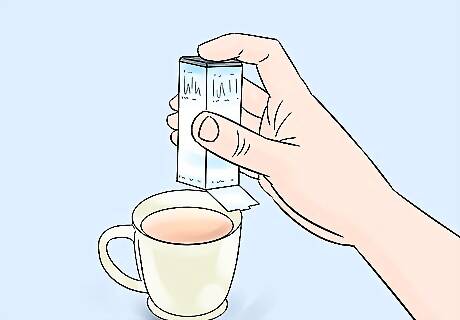
Trick the body with sugar substitutes. If your body is craving something sweet even after you have gradually reduced the amount of sugar in your diet, you may be able to trick your body by using sugar substitutes in lieu of real sugar. However, this is considered effective only as a short-term strategy because ultimately your body needs to get used to simply having less sweet food. The mind and the body are linked, and if you can convince your mind that it tastes sweetness, the body may believe that you're ingesting sugar. Many sugar substitutes have no calories, and these substitutes can be used to deal with withdrawal symptoms without spoiling a sugar-free diet. Opt for natural sugar substitutes such as Stevia and Xylitol rather than artificial sugar substitutes. Some research suggests that using artificial sweeteners may actually contribute to weight gain by desensitizing you to "naturally" sweet foods such as fruits and vegetables. Experts recommend using artificial sweeteners only as a way to wean yourself off sugar over a short period of time.
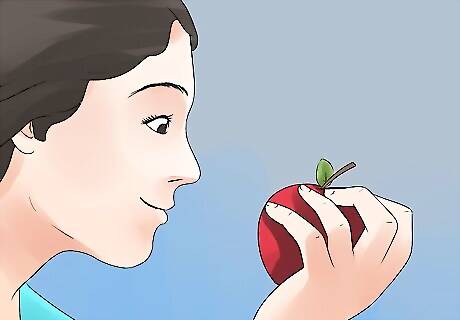
Eat fruit. Fruit has natural sugars, but it's also loaded with vitamins, minerals, and other nutrients. You can also get a lot more "bang for your buck" with fruit than you can with, say, a candy bar. For example, 1 1/4 cups of fresh strawberries has just 15 grams of sugar. A single-serve packet of M&Ms has more than twice that. Aim for fresh fruit rather than dried fruit or canned fruit, which often have added sugars.
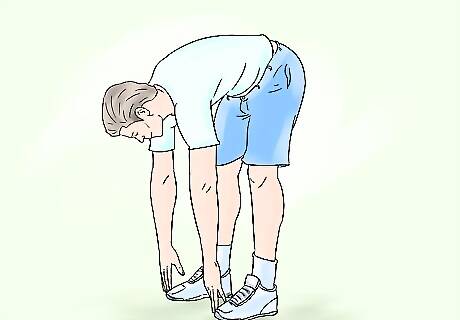
Respond to cravings with physical activity. Instead of standing at the refrigerator or the pantry when a sugar craving hits you, you can respond by participating in some type of physical activity. Exercise releases endorphins in the body, which may help to regulate the mood changes associated with sugar withdrawal symptoms. If you're experiencing headaches or nausea because of sugar withdrawal, an exercise routine may help to boost your energy and eliminate your symptoms through increased oxygenation of the body.
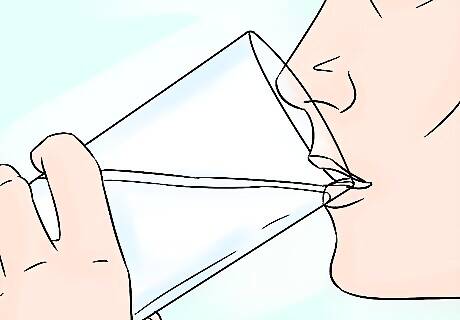
Drink lots of water. Sometimes people eat sugary foods when their bodies are actually craving liquid, so often simply drinking a glass of water can stop a sugar craving. Indeed, individuals who are addicted to high levels of sugar may have difficulty identifying the difference between a sugar craving and thirst. Whenever you experience an intense bout of sugar cravings, try drinking a glass of water to curb the urge. Experts recommend getting between 9-13 glasses of water a day.

Rid the house of sugar once you have eliminated it from your diet completely. At this point, the more distance you place between yourself and sugary snacks, the less likely you will be to fall back into old unhealthy habits. If the food is easily accessible, you will be more likely to give into temptation. However, if you do not keep sugary foods in your home, you will be more likely to find another, healthier way to deal with the sugar urge. See above for approaching others in your household about the issue.
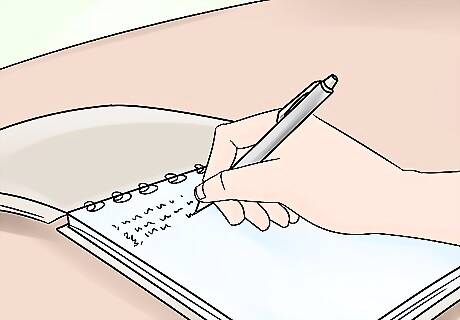
Keep a food journal. One great way to improve your chances of successfully navigating through sugar withdrawal symptoms is to keep a detailed journal about your daily diet, your hunger and sugar cravings, your sleep habits, your weight and your energy levels. A journal like this will provide you with motivation and clarity regarding the effects that sugar has had on your life and overall health. Keep details on what feels good about being sugar-free. The more you focus on the positive aspects of curtailing sugar in your life, the more you will see the benefits. Add recipes that are sugar-free to your food journal. Turn it into a place where you feel free to explore new things to eat, variations of your own experimentation and general thoughts on how to share your sugar-free ideas with others. Consider writing a blog if you enjoy sharing information and details on your experience. You'll meet others trying to go sugar-free and as well as sharing your tips on coping without sugar, you'll get lots of supporters who can share their experiences too.
Stepping Down the Carb Ladder

Eliminate refined sugar and processed foods first. Sugar is sugar, but foods with added sugar and highly processed foods usually don't offer much else in the way of nutrition, unlike nutrient-packed fruits and vegetables with natural sugars. These processed foods are therefore the most important to eliminate. That means soda, sweets, biscuits, cakes, pasta and white bread. Allow yourself healthy carbohydrate-rich foods such as fruit, brown rice, whole-grain pasta and bread, oatmeal, honey, dried fruit, and sweet potatoes. Remember that having something fatty, like cheese or nuts, can really help with sugar cravings until they pass. However, make sure you don't go overboard on the fat, either. Keep yourself to one ounce of cheese (a 1" cube) or one ounce of nuts (about a handful). Even if this is the one and only step you ever take down the carb ladder, you and your family will likely be much healthier for it, and might lose some weight, too!
Eliminate more sources of sugar and eat more vegetables. Do this if you want to reduce your sugar or carb intake further for health reasons, such as lowering blood sugar, controlling insulin spikes, or losing weight. In this step, you will cut down further on the amount of sugar and carbohydrates you consume. Remember that it may take weeks or a couple of months to comfortably wean yourself off refined sugar and processed foods, so don't rush into this second step. Increase your intake fresh vegetables — they provide crucial vitamins, minerals, and antioxidants. Keep dried fruits to a minimum or eliminate them completely. They should be celebration foods, not everyday foods. They are also packed with sugars. Cut out sugary sweeteners like maple syrup. Honey has a lot of great nutritional benefits, but try to keep your use to a minimum.

Try going Paleo. This type of diet, also called the "caveman diet," means completely grain free. There isn't a lot of research to support this type of diet or its health benefits, but if you feel better without eating grains, you can try it out. By this stage you should be completely over your sugar cravings, and eating minimal amounts of starchy carbs or grains already. A Paleo diet does not include potatoes, grains, rice, or legumes such as beans or peanuts. It does not include processed sugars of any kind, although fruit is allowed. The Specific Carbohydrate Diet is another grain-free diet. However, experts suggest that it may result in nutritional deficiencies because of its strict limitations.

Listen to your body. Are you happy where you are? You might find that you thrive on next-to-no carbs, or you might notice that your body needs more carbs than you are giving it. You can move up or down the ladder as you feel, but don't start eating refined sugar or processed foods again. They are very harmful to your health. If you start getting sugar or carb cravings, it's a sign you have woken your sleeping Sugar Monster by eating too much sugar, so you need to cut back until the cravings pass again. Don't make life a misery. If you're at a dinner party and your friend has baked an incredible chocolate cake, have some! Just remember that sweet treats should be occasional, not an everyday indulgence.










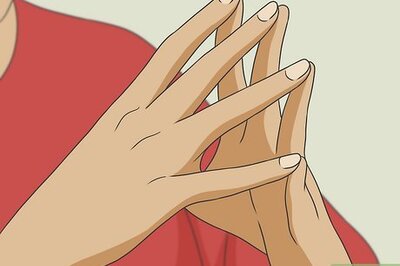







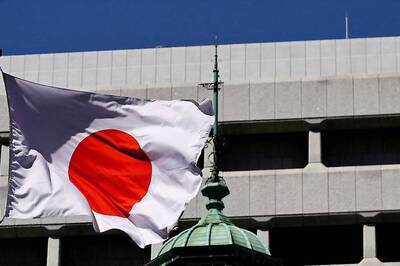

Comments
0 comment